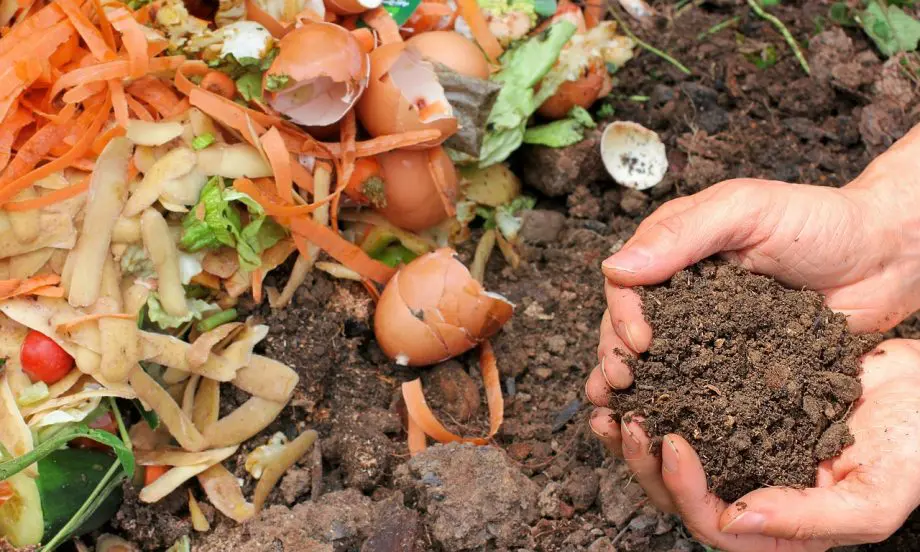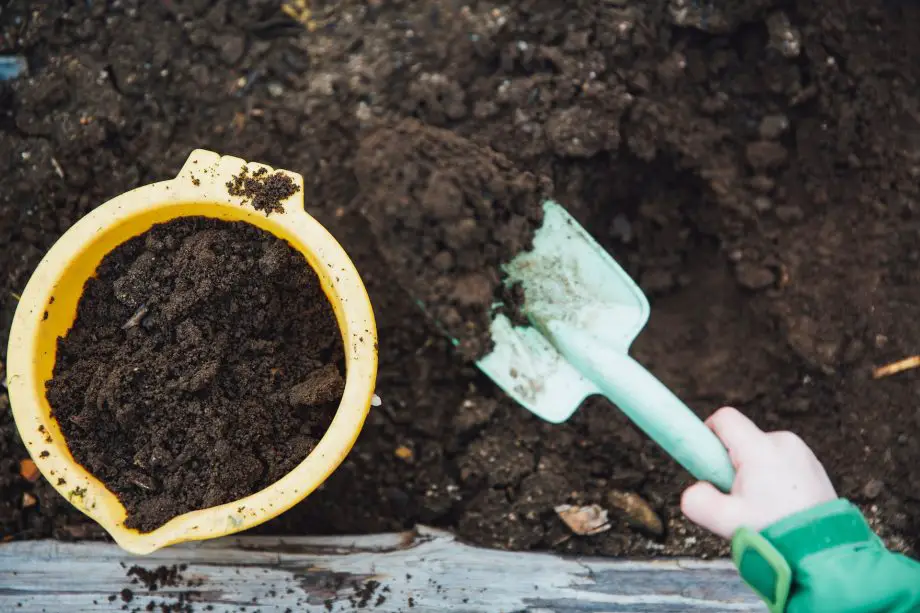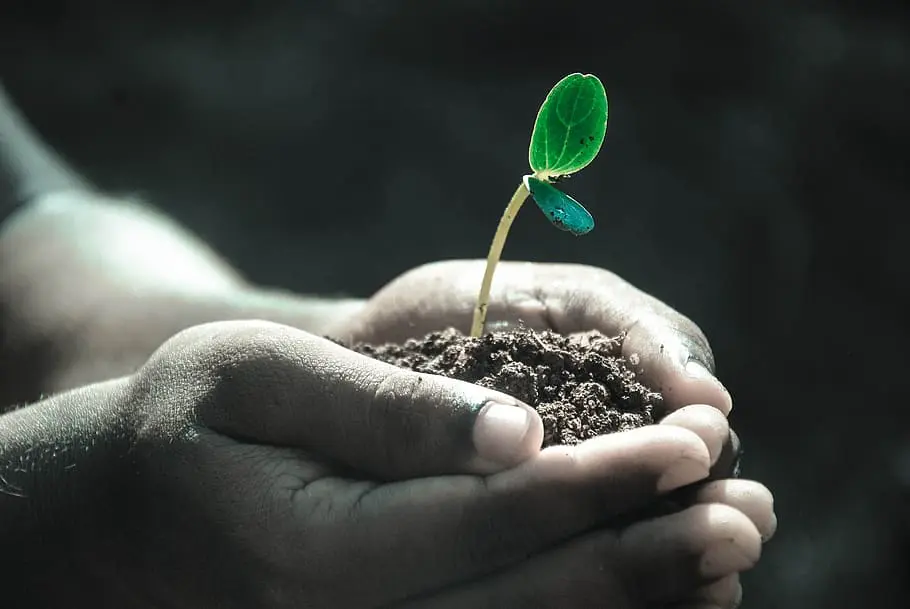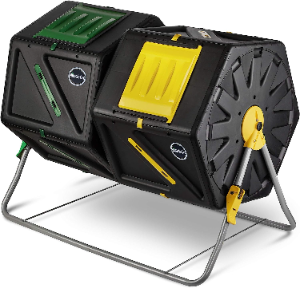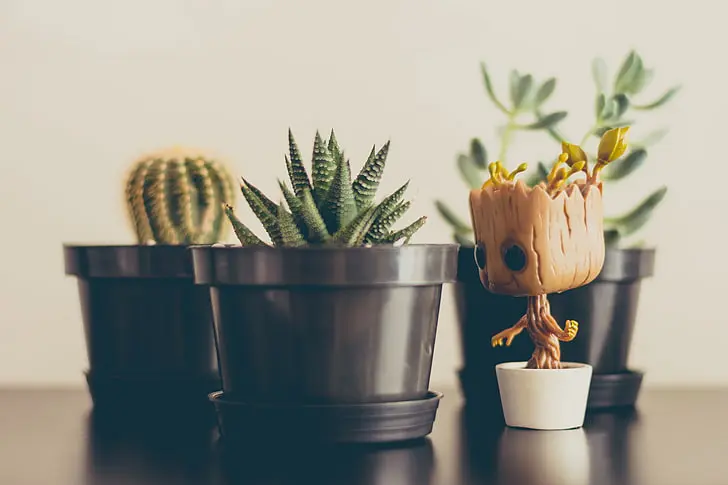
Discover the magic of gardening with our guide on how to use compost in potted plants. Your indoor garden will thrive with these simple, sustainable practices.
Imagine turning your kitchen scraps into a rich, nutritious supplement for your potted plants. Sounds like a green thumb’s dream, right?
Well, it’s time to wake up to the reality of composting! In this guide, we’ll walk you through the ins and outs of how to use compost in potted plants.
From creating your own compost to nurturing your indoor greenery, we’ll help you transform your potted plants into a vibrant, thriving indoor garden. So, let’s dive in and get our hands a little dirty!
How To Use Compost In Potted Plants
Welcome to your new favorite hobby: using compost in potted plants! This isn’t just about making your indoor garden flourish.
It’s about understanding the cycle of life right in your living room, from kitchen scraps to nutrient-rich compost, and finally, to vibrant, healthy indoor plants.
In this post, we’ll cover everything from the basics of composting to its application in your potted plants.
We’ll also delve into troubleshooting common compost issues and the benefits your plants will reap from this organic gold.
So, let’s embark on this exciting journey to greener, happier plants together!
Definition of Compost
Let’s start with the basics, shall we? Compost, often referred to as black gold by garden enthusiasts, is a rich, crumbly substance that’s teeming with life.
It’s made from organic materials, think kitchen scraps like vegetable peels, coffee grounds, and eggshells, or yard waste like leaves and grass clippings.
These materials break down over time, thanks to the hard work of microorganisms, worms, and insects.
The result? A nutrient-packed soil conditioner that’s perfect for giving your indoor plants or outdoor plants or vegetable gardens a boost.
Importance of Compost in Potted Plants
Now, you might be wondering, Why should I go through all this trouble for my potted plants?
Well, the answer lies in the incredible benefits of compost. Compost enriches the soil in your pots, providing your plants with the essential nutrients they need to grow strong and healthy.
It improves soil structure, ensuring better water retention in sandy soils and improved drainage in clay soils.
Plus, it introduces beneficial microorganisms that help protect your plants from diseases.
In a nutshell, using compost in potted plants is not only a good idea but it’s like providing a gourmet meal to your green buddies. They’ll not only survive but truly thrive!
Understanding Compost

Ready to dive deeper into the world of composting? Understanding compost isn’t just about knowing what it is, but also about appreciating the intricate processes that transform everyday waste into a gardener’s treasure.
In this section, we’ll unravel the mysteries of compost, from its composition to the science behind its creation.
We’ll also explore the role of those tiny, often overlooked heroes – the microorganisms – in the composting process.
So, let’s get ready to uncover the fascinating world beneath the compost heap!
What is Compost Made Of?
Compost is like a hearty stew, made up of a variety of ingredients, each adding its own flavor to the mix.
It’s primarily composed of organic matter so think of things like vegetable scraps, coffee grounds, eggshells, grass clippings, leaves, and even shredded newspaper.
These materials are categorized into ‘greens’ which provide nitrogen and ‘browns’ which provide carbon.
The magic happens when these ingredients decompose over time, transforming into a nutrient-rich, soil-like substance that plants absolutely love.
The Science Behind Composting
Now, let’s put on our science hats for a moment. The composting process is a fascinating example of nature’s recycling system.
It’s a biological process where microorganisms, such as bacteria and fungi, break down organic matter in the presence of air and water.
This process generates heat, and that’s why compost piles often feel warm to the touch.
Over time, the original organic materials are transformed into a stable, humus-like substance that’s teeming with nutrients.
The Role of Microorganisms in Composting
Microorganisms are the unsung heroes of the composting process.
These tiny creatures, including bacteria, fungi, and even some types of insects and worms, work tirelessly to break down the organic materials in your compost pile.
They munch away at the scraps, breaking them down into simpler substances.
It’s their activity that generates the heat we mentioned earlier. So, next time you look at your compost pile, remember to thank these little guys for their hard work!
Difference Between Potting Soil and Compost
While both potting soil and compost are vital for plant growth, they serve different purposes.
Potting soil, as the name suggests, is a medium for growing plants. It provides structure for the plant roots and helps retain water.
Compost, on the other hand, is more of a soil conditioner. It’s rich in nutrients and can be mixed into potting soil to enrich it.
While you can grow plants in compost alone, it’s usually best to mix it with potting soil to provide the best environment for your plants.
How to Make Compost
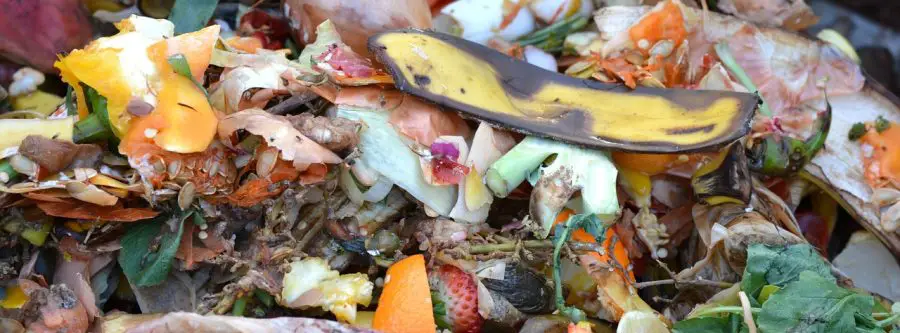
Are you ready to roll up your sleeves and dive into the art of making compost?
Creating your own compost might seem like a daunting task, but trust me, it’s simpler than you think.
Plus, it’s incredibly rewarding. Not only will you be reducing waste, but you’ll also be creating something incredibly beneficial for your plants. Good choice!
In this section, we’ll guide you through the process, from choosing the right compost bin to understanding what to compost and what to avoid.
So, let’s get started on this exciting journey to creating your very own homemade compost black gold!
Choosing the Right Compost Bin
Choosing the right compost bin is like choosing a home for your future compost.
There are many options available, from simple homemade bins made from old pallets to fancy tumbling bins that make turning your compost a breeze.
The right bin for you depends on your space, budget, and how much effort you want to put into your composting.
Remember, the key features to look for are good ventilation and easy access to turn your compost.
What to Compost: Greens and Browns
Composting is all about balance, particularly between ‘greens’ and ‘browns’.
Greens are materials rich in nitrogen, like vegetable scraps, coffee grounds, and fresh grass clippings.
Browns, on the other hand, are carbon-rich materials like dried leaves, straw, or shredded newspaper.
A good rule of thumb is to aim for a balance of compost materials, but don’t worry too much about being precise. Nature is pretty forgiving!
The C:N ratio for compost
The carbon-to-nitrogen ratio (C:N ratio) is a critical factor in composting. This ratio refers to the amount of carbon (C) in relation to nitrogen (N) in your compost pile.
The ideal C:N ratio for composting is generally considered to be around 25-30:1.
This means that for every 25-30 parts of carbon, you should have 1 part of nitrogen.
Carbon-rich materials (often referred to as browns) include things like dried leaves, straw, and paper.
These materials provide energy for the composting organisms. Nitrogen-rich plant material (often referred to as greens) includes things like vegetable scraps, coffee grounds, and grass clippings. These materials provide protein for the composting organisms.
Maintaining a good C:N ratio is important for efficient composting.
If there’s too much carbon, the composting process will be slow.
If there’s too much nitrogen, you might end up with a smelly compost pile as the excess nitrogen converts into ammonia gas.
Remember, these are general guidelines and composting can be flexible.
Don’t worry if you don’t get the ratio exactly right as composting is a natural process and it will happen even if conditions aren’t perfect.
What to Avoid in Compost
While composting is a great way to recycle, there are some things that should never make their way into your compost bin.
Avoid adding meat, dairy, and diseased plants, as these can attract pests or create unpleasant smells.
Avoid adding plants with weed seeds as compost may not get hot enough to kill them and you don’t want to add them to your garden.
Also, steer clear of any materials that might contain harmful substances, like chemically-treated wood or glossy printed paper.
Steps to Composting
Ready to start composting? Here’s a simple step-by-step guide.
• First, choose a suitable location for your compost bin.
• Next, start your compost pile with a layer of browns for good airflow.
• Then, add a layer of greens and a bit of soil or finished compost to introduce microorganisms.
• Continue adding greens and browns in layers, trying to maintain a balance.
• Turn your compost pile every few weeks to help it decompose evenly.
• With time, patience, and a bit of care, you’ll have rich, crumbly compost ready for your potted plants!
The Advantages of Tumbling Composters
Tumbling composters are a fantastic choice for many garden enthusiasts and for good reason.
These handy devices offer several advantages that can make your composting journey a breeze.
Firstly, they’re incredibly user-friendly. With a simple turn of the handle, your compost is mixed and aerated, with no heavy lifting required.
This not only saves you effort but also speeds up the composting process.
One of the standout advantages of tumbling composters is their ability to produce finished compost much faster compared to traditional compost piles or bins.
This is largely due to their design which allows for easy and frequent aeration every time the composter is turned.
This increased oxygen flow helps speed up the decomposition process carried out by the microorganisms in the compost.
So, if you’re eager to get your hands on nutrient-rich compost in a shorter timeframe, a tumbling composter is an excellent choice.
It’s all about turning waste into plant-boosting compost quickly and efficiently!
Secondly, tumbling composters are typically enclosed, which helps keep pests at bay and reduces any potential odors.
They’re also compact and tidy, making them a great option for smaller spaces or for those who prefer a neater look.
Lastly, many tumbling composters are designed with dual chambers, allowing you to have two batches of compost at different stages.
This means you can have a continuous supply of compost for your potted plants.
So, if you’re looking for a convenient, efficient, and tidy composting solution, a tumbling composter might be just the ticket!
How to Use Compost in Potted Plants
Now that we’ve got our hands dirty and created our own compost, it’s time for the fun part, using it in our potted plants!
This is where you’ll see all your hard work pay off as you watch your plants thrive.
But how exactly do you use compost in potted plants? In this section, we’ll guide you through the process, from checking the readiness of your compost to the actual application and maintenance.
So, let’s get those green thumbs working and give your potted plants the nutrient boost they deserve!
Checking the Compost
Before we start using our compost, we need to make sure it’s ready. Finished compost should be dark, crumbly, and smell like earth.
If it still has recognizable bits of food or leaves, give it more time. Also, it should be cool to the touch.
Remember, composting is a process, and patience is key. It’s worth the wait to have nutrient-rich compost that your potted plants will love.
Mixing Compost with Potting Soil
Once your compost is ready, it’s time to mix it with your potting soil.
This isn’t a precise science, but a good rule of thumb is to aim for a 1:1 ratio of compost to potting soil.
This will give your plants a balanced mix of enough nutrients from the compost and the structure and drainage they need from the potting soil.
Just mix the two together until they’re well combined, and voila! You’ve got a supercharged potting mix ready for your plants.
Don’t use garden soil on your indoor plants or in containers as it can contain pests and will compact heavily.
How Much Compost to Add to Potting Soil
The amount of compost you should add to your potting soil depends on the needs of your plants and the quality of your compost and potting soil.
As mentioned earlier, a 1:1 ratio is a good starting point. However, if your compost is very rich or your plants prefer lighter soil, you might want to use less compost.
On the other hand, if your potting soil is lacking in nutrients, a bit more compost might be beneficial.
Finished compost will not burn your plants like chemical fertilizers can. If fact you can grow plants in straight compost with no harm.
Remember, gardening is an art as much as a science, so don’t be afraid to experiment and find what works best for you and your plants.
Applying compost to potted plants
Alright, we’ve got our compost ready and our potting soil mixed, now comes the exciting part, applying the compost to our potted plants!
This is where we get to see the fruits of our labor as we give our plants a nutrient-packed treat.
But how do we go about it? In this section, we’ll cover everything from how much compost to use, to the different methods of application.
So, let’s get those pots ready and give our plants the feast they’ve been waiting for!
Can I Put Compost on Top of the Soil?
This method is often referred to as top dressing, and it’s a fantastic, no-fuss way to enrich your potted plants with compost.
Simply spread a layer of compost on top of the existing soil in your pots.
Over time, watering and natural processes will help the nutrients in the compost seep down into the soil, giving your plants a steady supply of nutrients.
It’s an easy and effective way to boost the health of your plants.
Can You Use Compost as Mulch?
Compost makes an excellent mulch for your potted plants. Applying a layer of compost on top of your potting soil can help retain moisture, suppress weeds, and slowly release nutrients into the soil.
Plus, it gives your pots a neat, finished look. Just remember to leave some space around the plant stems to prevent any potential rot issues.
Compost for Plants in Pots
Compost is a real treat for any plant, and potted plants are no exception.
Whether you’re growing herbs, vegetables, or ornamental plants in pots, adding compost can significantly improve their health and vigor.
It provides a wide range of nutrients and improves the structure and moisture-holding capacity of the potting soil, and improves soil health making it a fantastic addition to any potted plant’s routine.
Compost in Container Gardens
If you’re a container gardener, compost is your best friend. It’s a natural, cost-effective way to provide your container plants with the nutrients they need to thrive.
You can mix it into your potting soil or use it as a mulch during the growing season. Either way, your container plants will thank you for the nutrient boost!
Maintenance of Compost in Potted Plants
Maintaining compost in your potted plants is pretty straightforward.
If you’re using compost as a soil amendment, you might want to add a fresh layer of compost once or twice a year, usually in the spring or fall.
If you’re using compost as mulch, simply add a new layer when the old one starts to thin out.
Remember, compost is organic and will continue to break down over time, so regular additions can help maintain the nutrient levels in your pots.
Making Compost Tea
Compost tea is a fantastic way to give your plants a nutrient boost, and the best part is, it’s quite simple to make!
Here’s a quick guide:
• Start with a handful or two of compost. The richer and more finished your compost, the better your tea will be.
• Place the compost in a bucket and add water. The ratio doesn’t have to be precise but aim for about 5 parts water to 1 part compost.
• If your tap water is chlorinated, let it sit out overnight before using it to allow the chlorine to evaporate.
• Stir the mixture well and let it sit for 3-4 days. During this time, the water will extract the nutrients from the compost. Stir the mixture once or twice a day to help the process along.
• After 3-4 days, strain the mixture to remove the solids. You can use a cheesecloth or a fine mesh strainer for this. The liquid you’re left with is your compost tea!
• To use your compost tea, simply water your plants with it. It’s gentle enough to be used as often as you like, and your plants will love the extra nutrients!
Remember, compost tea is best used fresh, so try to use it all within a day or two of making it.
If you have any leftovers, you can always pour them back into your compost pile.
Troubleshooting Common Compost Issues
Even with the best intentions, sometimes things can go awry with our compost.
But don’t worry, it’s all part of the journey and there’s always a solution!
In this section, we’ll tackle some common compost issues that you might encounter, from unpleasant odors to slow decomposition and even unwanted pests.
Remember, every challenge is an opportunity to learn more about the fascinating process of composting. So, let’s roll up our sleeves and get problem-solving!
Dealing with Odors
If your compost pile is giving off an unpleasant smell, don’t panic! It’s usually a sign that something’s a bit off balance.
Often, it’s because the compost pile is too wet or there’s too much green material, both of which can create a lack of oxygen and lead to smelly anaerobic decomposition.
To fix this, try turning your compost to increase aeration and adding some browns, like dried leaves or shredded newspaper, to absorb excess moisture and balance the green materials.
Slow Decomposition
If your compost pile seems to be taking forever to break down, there could be a few reasons it’s taking a long time.
It might be too dry, in which case you can add some water or green materials to increase moisture.
It could also be lacking in nitrogen, which is essential for decomposition. Adding more green materials can help with this.
Finally, turning your compost pile regularly can speed up the decomposition process by improving aeration and mixing the materials.
Unwanted Pests and Flies
Unwanted pests and flies are a common issue in composting, but they’re usually easy to manage.
Most pests are attracted to compost piles because of kitchen food scraps, especially meat and dairy products, which should be avoided in compost for best results.
If you’re dealing with a fly problem, try covering your kitchen scraps with a layer of browns whenever you add them to the pile.
This can help deter flies and also balance the green and brown materials in your compost.
For larger pests, a compost bin with a secure lid can be a good solution.
Benefits of Using Compost in Potted Plants
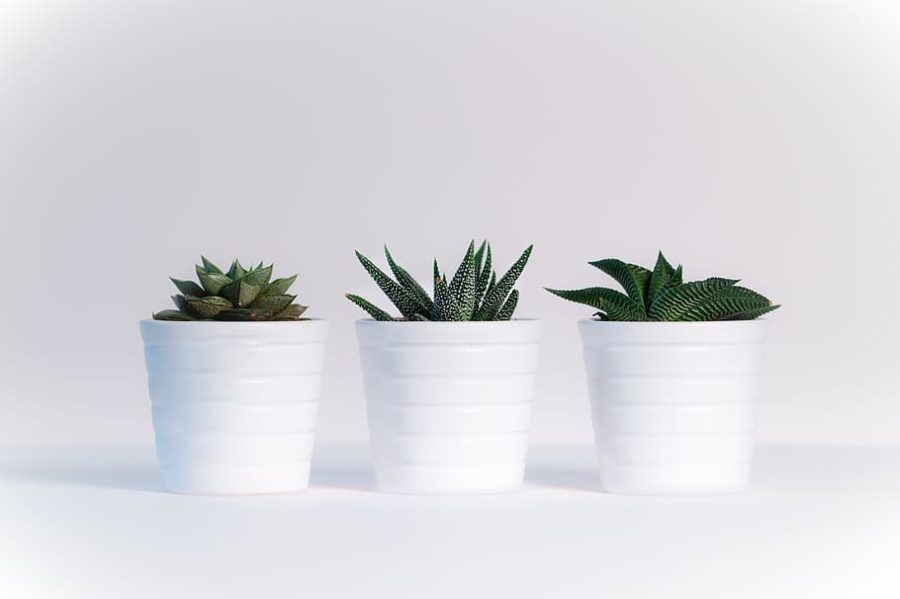
Now that we’ve covered the how-to’s of composting and troubleshooting common issues, let’s talk about the exciting part, the benefits of using compost in potted plants!
This is where all your hard work pays off and you get to see the fruits (or flowers, or leaves) of your labor.
Compost is not just a soil amendment, it’s a game-changer for any potted plant.
From improving soil texture to enhancing nutrient content and even suppressing diseases, the benefits of compost are truly remarkable. So, let’s dive in and explore these benefits in more detail!
Improved Soil Texture
One of the most noticeable benefits of using compost in potted plants is the improvement in soil texture.
Compost helps to create crumbly, well-structured soil that’s easy for roots to penetrate.
It improves the soil’s ability to hold onto essential nutrients and water, while still allowing excess water to drain away, preventing waterlogging.
This means your plants have a constant supply of what they need to grow, without the risk of their roots becoming waterlogged and oxygen-starved.
Disease Suppression
Compost can also help to suppress plant diseases. It introduces beneficial microorganisms to the soil, which can outcompete disease-causing organisms, keeping your plants healthier.
Additionally, these beneficial microorganisms can stimulate the plant’s own natural defenses, making them more resistant to diseases.
So, by adding compost to your pots, you’re not just feeding your plants, you’re also helping to protect them!
Enhanced Nutrient Content
Last but certainly not least, compost is a powerhouse of nutrients. It’s rich in the essential nutrients that plants need to grow, including nitrogen, phosphorus, and potassium, as well as a host of micronutrients.
These nutrients are released slowly over time, providing a steady supply to your plants.
This is in contrast to synthetic fertilizers, which can provide a quick burst of nutrients but then leave the soil depleted.
With compost, your potted plants have a constant, balanced supply of the nutrients they need to thrive.
Compost for Plants in Pots FAQs

We’ve covered a lot of ground on our composting journey, and you might still have a few questions.
Curiosity is the gardener’s best tool. In this section, we’ll tackle some of the most frequently asked questions about composting and using compost in potted plants.
From how often to turn your compost pile to whether you can compost year-round, we’ve got you covered. So, let’s dive into these questions and quench that thirst for knowledge!
Q: Can I Use Compost for Potting Soil?
A: Absolutely! Compost is a fantastic addition to potting soil. However, it’s best to use compost as an amendment to potting soil rather than using it alone.
A good rule of thumb is to mix equal parts compost and potting soil for a nutrient-rich, well-draining mix.
Q: How Often Should I Turn My Compost Pile?
A: Turning your compost pile once every week or two is a good practice.
If you notice your compost pile is smelly or not breaking down, it might need more frequent turning.
Q: How Long Will It Take to Make Finished Compost?
A: The time it takes to make finished compost can vary widely, but in general, compost can take anywhere from 2 months to a year to fully mature.
Remember, composting is a natural process and patience is key!
Q: Can I Compost Year Round?
A: Yes, you can compost year-round! While the composting process slows down in colder weather, it doesn’t stop completely.
You can continue to add materials to your compost pile throughout the winter.
Q: What Should I Do if My Compost Bin Becomes Soggy?
A: If your compost bin becomes soggy, try adding more browns, like dried leaves or shredded newspaper, to absorb the excess moisture.
Turning the compost can also help by introducing more air and balancing out the moisture.
If your compost bin is consistently too wet, you might want to check if it’s in a location where it’s getting too much rain, and consider moving it if necessary.
How To Use Compost In Potted Plants Conclusion
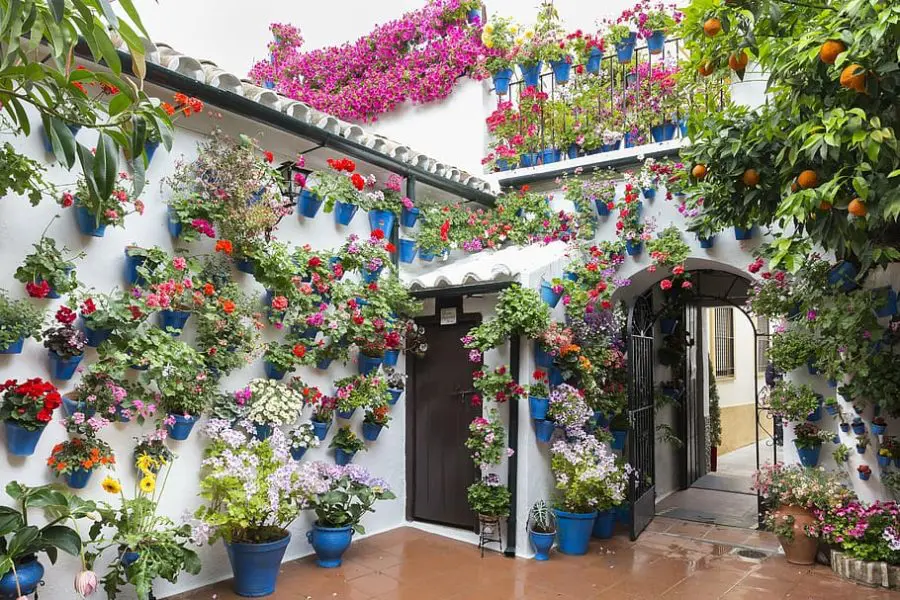
We’ve come a long way on our composting journey, haven’t we?
From understanding what compost is made of to making our own, and finally using it to boost the health of our potted plants. It’s been quite an adventure!
But as we wrap things up, it’s important to reflect on what we’ve learned and how we can apply it in our gardening practices.
In this concluding section, we’ll recap the importance of compost in potted plants and encourage sustainable practices.
So, let’s take a moment to appreciate the magic of composting and the wonders it does for our potted plants!
Recap of the Importance of Compost in Potted Plants
Compost is truly a game-changer when it comes to potted plants. It’s not just about providing nutrients, although that’s a huge part of it.
Compost improves the texture of the soil, making it easier for roots to grow and for water to drain.
It introduces beneficial microorganisms that can help protect plants from diseases.
And it’s a sustainable way to recycle kitchen and garden waste, turning it into something that can nourish your plants.
So, whether you’re growing herbs on your windowsill or flowers on your balcony, compost can make a world of difference.
Encouragement for Sustainable Practices
As we conclude, I want to encourage you to embrace composting as part of your gardening routine.
It’s a small step that can have a big impact, not just on the health of your plants, but on the health of our planet.
Composting reduces the amount of waste that ends up in landfills and reduces the need for synthetic fertilizers.
It’s a win-win situation for everyone! So, keep composting, keep learning, and keep growing. Your plants and the planet will thank you.



